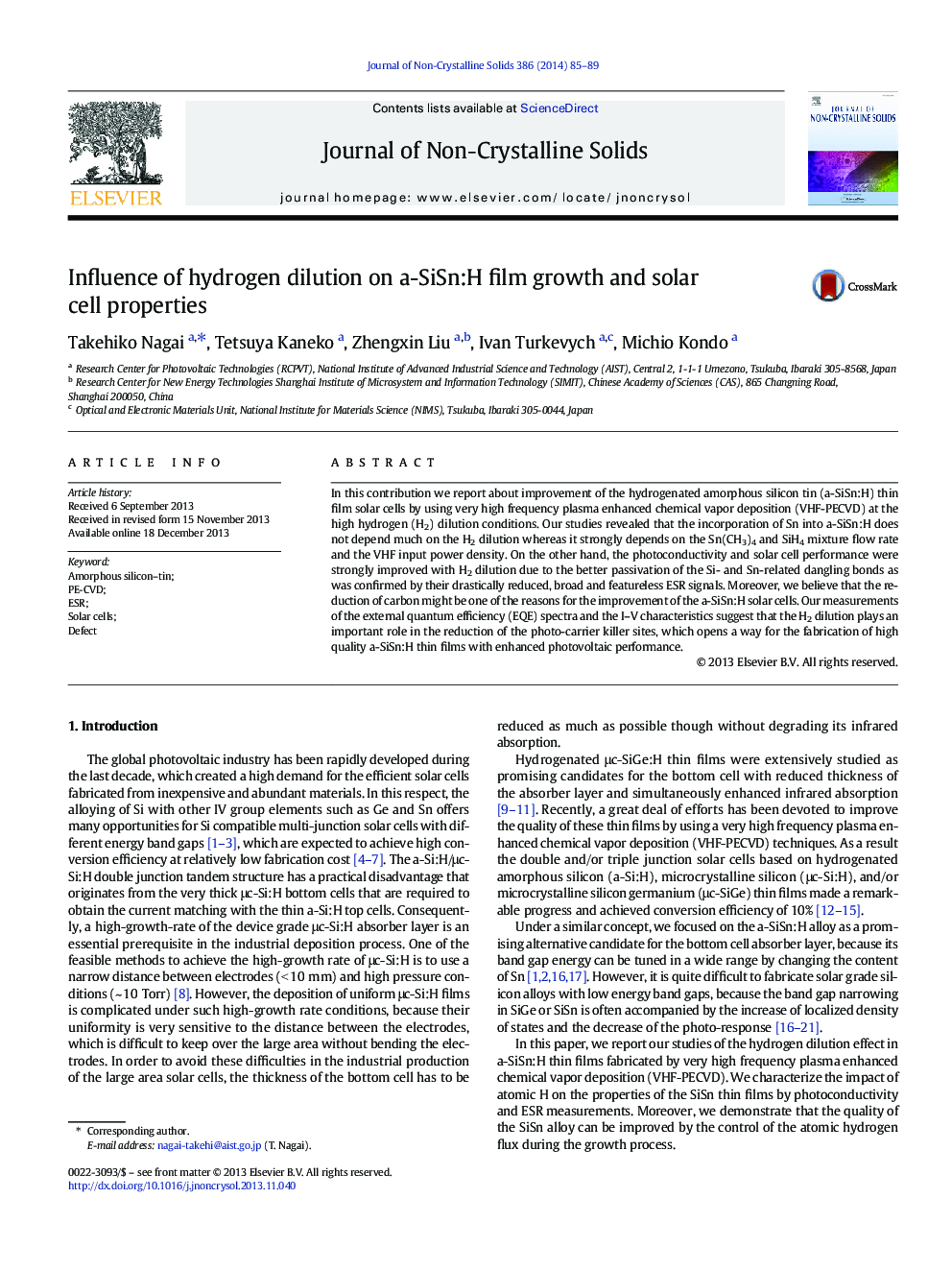| Article ID | Journal | Published Year | Pages | File Type |
|---|---|---|---|---|
| 7902528 | Journal of Non-Crystalline Solids | 2014 | 5 Pages |
Abstract
In this contribution we report about improvement of the hydrogenated amorphous silicon tin (a-SiSn:H) thin film solar cells by using very high frequency plasma enhanced chemical vapor deposition (VHF-PECVD) at the high hydrogen (H2) dilution conditions. Our studies revealed that the incorporation of Sn into a-SiSn:H does not depend much on the H2 dilution whereas it strongly depends on the Sn(CH3)4 and SiH4 mixture flow rate and the VHF input power density. On the other hand, the photoconductivity and solar cell performance were strongly improved with H2 dilution due to the better passivation of the Si- and Sn-related dangling bonds as was confirmed by their drastically reduced, broad and featureless ESR signals. Moreover, we believe that the reduction of carbon might be one of the reasons for the improvement of the a-SiSn:H solar cells. Our measurements of the external quantum efficiency (EQE) spectra and the I-V characteristics suggest that the H2 dilution plays an important role in the reduction of the photo-carrier killer sites, which opens a way for the fabrication of high quality a-SiSn:H thin films with enhanced photovoltaic performance.
Keywords
Related Topics
Physical Sciences and Engineering
Materials Science
Ceramics and Composites
Authors
Takehiko Nagai, Tetsuya Kaneko, Zhengxin Liu, Ivan Turkevych, Michio Kondo,
